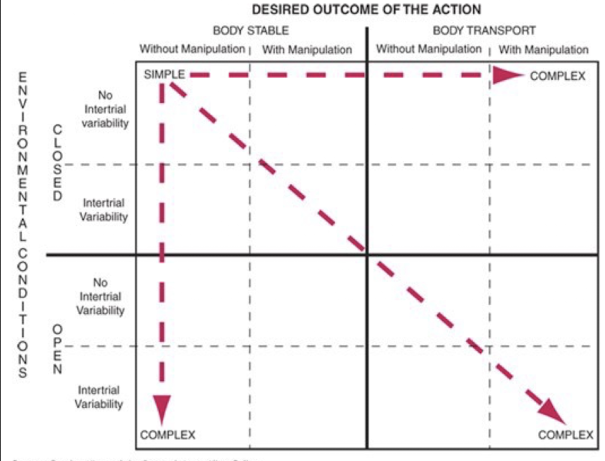Unit 1-3
1/19
There's no tags or description
Looks like no tags are added yet.
Name | Mastery | Learn | Test | Matching | Spaced |
|---|
No study sessions yet.
20 Terms
What is the difference between communities and populations?
Communities: groups of people that may not be in the same area but who share common interests, concerns, or identities.
Populations: groups of people that are connected by their demographics or other factors like ethnicity, socioeconomic status, and population density.
What is the movement system?
The anatomic structures and physiologic functions that interact to move the body or its component parts.
What is the difference between a framework and a model?
Framework: broad conceptual structure that provides a basic overview/outline.
Model: more specific description of a process.
Where in the patient/client management model does therapeutic exercise take place?
Intervention
According to the physical stress theory (PST), at what level do you want you patients to train at?
in the increased tolerance level, just above maintenance, but below injury.
What is FITT-VP in terms of exercise prescription principles?
Frequency
Intensity
Time
Type
Volume
Progression
What are the exercise guidelines for adults with chronic health conditions and adults with disabilities?
At least 150- 300 minutes a week of moderate intensity aerobic activity OR
75-150 minutes a week of vigorous intensity aerobic physical activity.
Muscle-strengthening activities of moderate or greater intensity that involve all major muscle groups 2 or more days per week.
If they can’t achieve these, they should engage in regular activity according to their abilities.
What is the difference between performance and learning in terms of motor learning?
Performance: Acquisition of the ability to carry out the skill (what we observe in treatment)
Learning: Both acquisition and retention (over multiple treatment sessions)
What is a discrete motor task? Provide an example.
Involves and action or movement with a recognizable beginning and end.
Ex. throwing/kicking a ball, hitting a tennis serve, pressing a button, flipping a light switch.
What is a serial motor task? Provide an example.
Series of discrete movements that are combined in a particular sequence (some require specific timing between each segment)
Ex. Gymnastics routine, ballet dancer completing a routine, making a sandwich.
What is a continuous motor task? Provide an example.
Continuous task involving repetitive, uninterrupted movements with no distinct beginning and ending.
Ex. Walking or running, cycling, swimming, rowing
What are 4 different progressions of a motor task?
Open or closed environment
Variability between tasks and of the environment.
Need for a person’s body to remain stationary or move during the task.
Presence or absence of manipulation of objects during the task.

Explain the cognitive stage of motor learning.
Patient is figuring out what to do and the how to do the task sagely and correctly.
At this stage, the patient needs to think about each component or the sequencing of the skilled movement (pt is getting a “feel” for it).
Explain the associative stage of learning.
Patient makes infrequent errors and concentrates on fine-tuning the motor task.
Explain the autonomous stage of motor learning.
Patient does not have to pay attention to the movements in the task, making it possible to do other tasks simultaneously.
Most patients are discharged before this stage occurs.
In which stage are slight variations introduced to motor tasks?
Associative
In which stage of motor learning does the patient easily adapt to variations in task demands and environment conditions?
Autonomous
What is blocked-order practice? Provide an example.
Same task or series of exercises is performed repeatedly under the same conditions and in a predictable order.
Ex. patient walking in the same environment, pt stepping to and from same height platform.
What is random-oder practice? Provide an example
Slight variations of the same task are carried out in an unpredictable order.
Ex. pt stepping up from chairs of different heights or styles in random order.
What is random/blocked-order practice? Provide an example.
Variations of the same task are performed in random order, but variation of the task is performed more than once.
Ex. pt rises from a particular height or style chair and then repeats the same task a second time before moving onto a different height or style chair.